- Updated: February 9, 2024
Best Blade Irons 2023
Blade irons are defined by their thin, compact head shapes and beautiful craftsmanship that not only inspires more confidence in lower handicap golfers but also removes confidence from those less skilled. (The inverse is true with cavity back irons.)
Our favorite blade irons of 2023 are the Srixon Z-Forged II for their modern design and progressive head shapes for better performance.
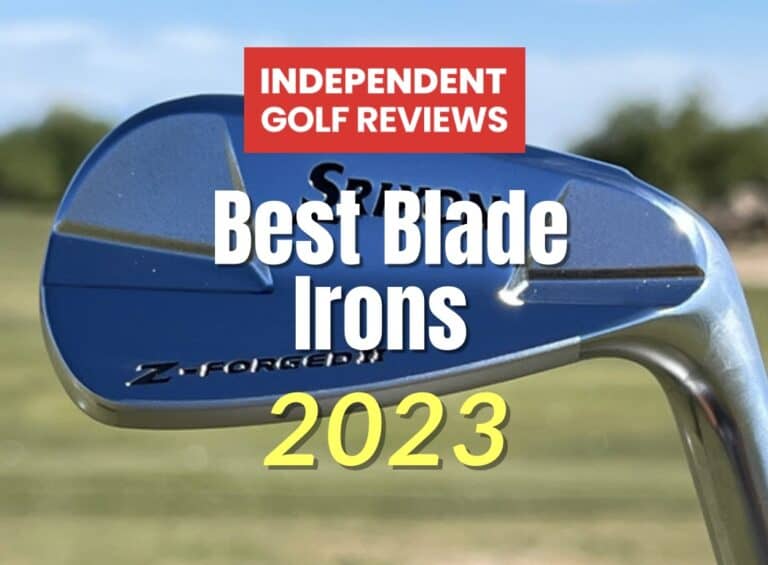
1 | OUR TOP PICK | Srixon Z-Forged II |
| |
2 | 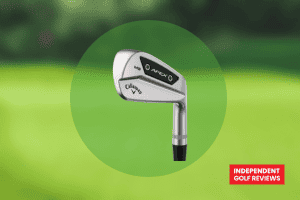 ALTERNATIVE | Callaway Apex MB |
| |
3 | 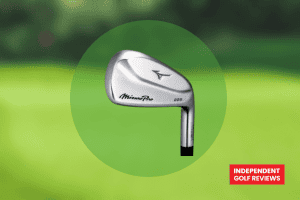 ALTERNATIVE 2 | Mizuno Pro 221 |
|
Top 12 Blade Irons of 2023
- Srixon Z-Forged II (Newest Srixon Bladed Irons)
- Callaway Apex MB Irons (Modern Blade Iron Design)
- Mizuno Pro 225 (Tradition & Performance-Focused Blade Irons)
- TaylorMade P7MB (Updated TaylorMade Blade Iron)
- Titleist 620 MB (Traditionalist/Golf Purist Blade Irons)
- Wilson Staff Model Blade Irons (Forgiveness-Focused Blade Irons)
- New Level 623 MB (Futuristic Looking Blade Iron)
- Miura MB 101 (Beautiful Craftsmanship & Thinnest Look)
- PING BluePrint (Technology Packed Blades)
- Cobra KING MB (Designed for Full Set or Combo Set Use)
Our breakdown below will compare and discuss the 11 best blade irons 2023 has to offer.
Make sure you stick around after our blade iron breakdowns, where we’ll answer a few of our reader’s most commonly asked questions about blade-style irons and talk about how we test blades when purchasing a new set.
1. Srixon Z-Forged II (Newest Srixon Bladed Irons)
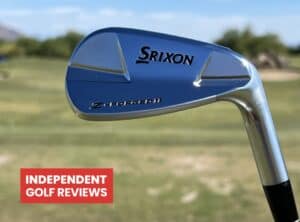
Srixon designed the Z-Forged II blades for Tour players and highly skilled amateur golfers craving a classic look with maximum versatility on the golf course.
From an aesthetic view, the Srixon Z-Forged II blades are stunning. Unlike many blades with a straight muscle back, the Z-Forged iron’s rear club head shaves weight from the corners and places it directly behind the ball.
Srixon irons are well known for their “Tour V.T. Sole.” This “V” shaped sole has been implemented into the Z-Forged irons to provide more consistency in ball striking without sacrificing shot-shaping ability.
The sound off the Z-Forged II club face is soft and more muted, which many players love. Being forged from a single piece of 1020 Carbon Steel, the vibrational feedback more than makes up for the lack of acoustics.
If you’d like to check out our hands-on review of the Srixon Z-Forged II Irons. Our reviewer found he gained nearly a full stroke in his scoring with the Z-Forged blades in the bag!
Stock Shafts: Nippon N.S. Pro Modus 3 Tour 120
Pros | Cons |
|
|
2. Callaway Apex MB Irons (Modern Blade Iron Design)

Callaway says they designed their Apex MB irons for the Tour Pro to the scratch golfer who needs the ultimate feel, feedback, and workability.
Compared to previous Callaway blades, the Apex MB’s have a traditional, thinner top-line, smaller soles, less offset, and more compact blade lengths for a “players iron” appearance.
As you likely noticed, the Apex MBs feature a new weight bar in the center of the back of the club head. This allows Callaway club engineers to precisely dial in the location of the center of gravity and change the weight (if needed) in a custom fitting for a better experience from user to user.
All-new “20V Grooves” were designed to promote the highest level of control and spin consistency out of any playing conditions.
If you’re looking for a blade iron with a modern look, the Callaway Apex MB’s are well worth your consideration.
Stock Shafts: Premium Options from AeroTech, KBS Mitsubishi Chemical, UST, KBS, Nippon, Project X, and True Temper
Pros | Cons |
|
|
3. Mizuno Pro 225 (Tradition & Performance-Focused Blade Irons)

Mizuno forged irons are known for feeling incredible off the club face. Mizuno says they had so few complaints about their previous generations of blade irons that they call the new 2023 Pro 225’s the “birth-child” of their older designs.
Beginning with the Pro 225’s appearance, the top line visible to golfers has been beveled for the look of a narrower “player’s blade” without sacrificing mass from the upper blade portion. By keeping more mass in the upper part of the club face, Mizuno can give a pure, more forgiving feel without sacrificing workability.
The scoring irons in the set (8 iron – PW) are dramatically smaller than previous Mizuno blade generations. This shift came from direct feedback from Mizuno PGA TOUR players.
The Mizuno Pro 225s are designed to be more penetrating in the scoring irons and easier to launch in the longer irons for more consistency on shorter shots and more green-holding height on the longer ones.
Lastly, every Mizuno iron is “Grain Flow Forged” in Hiroshima, Japan, and they include a soft copper underlay in their face that helps provide the classic, effortless feel that Mizuno clubs are known for at impact.
Stock Shafts: 30 Premium Shaft Offerings
Pros | Cons |
|
|
4. TaylorMade P7MB (Updated TaylorMade Blade Iron)
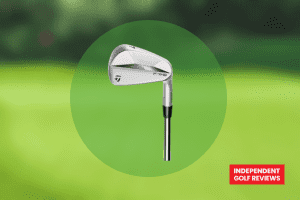
TaylorMade’s newly updated P7MB irons haven’t received the advertising time of their famous “Stealth” line, but that shouldn’t stop anyone from considering them on their hunt for the best blades of 2023.
TaylorMade started their design process with direct feedback from TaylorMade-sponsored Tour professionals like Tommy Fleetwood, Collin Morikawa, and Tiger Woods (3 of the best iron players in history).
The P7MB irons feature a thin top line and progressive offset as the clubs get longer for increased playability without sacrificing in the looks department.
The biggest change to the revamped P7MBs is the new addition of “Faceted Muscle Back Geometry” on the rear of the club head. This new trapezoid-adjacent muscle back delivers precise center of gravity placement throughout the set for ideal performance.
While the previous P7MBs were aesthetically pleasing, we found the new version exponentially better looking from TaylorMades choice of using a brushed finish on the face (reducing glare) and a polished finish on the back to look great in the bag and to competitors.
For those less confident in their ball striking, the P7MB transition comfortably into the P7MCs that offer more forgiveness and playability.
Stock Shafts: KBS Tour Steel
Pros | Cons |
|
|
5. Titleist 620 MB (Traditionalist/Golf Purist Blade Irons)
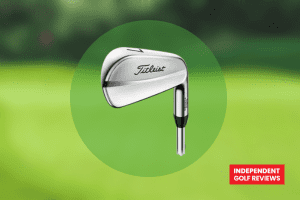
Titleist has developed one of the best reputations in the golf iron manufacturing world because they take the aesthetics of their clubs equally as seriously as their performance.
Titleist forged blades have mostly stayed the same over the generations, but the Titleist 620 MB continues to be one of, if not the leading selling blades year after year. Titleist has slightly tweaked the 620 MB’s performance and looks based on PGA Tour players’ and high-level amateur golfer’s direct feedback.
Titleist reduced the amount of offset to give the 620 MB’s the “ultimate player’s iron look.” Titleist engineers added slightly more forgiveness through a more rounded leading edge and sole to make the 620s slide through the turf with less digging.
Last on the design changes, the 620 MB’s are progressive in blade length from the longest iron to the shortest iron (making every club look very similar at address), and the club face itself progresses from more shallow in the long irons to taller in the pitching wedge to offer better control in the sets scoring irons.
The “620” name is a nod back to Titleist’s original 600 series of forged blades from the early-mid 2000s, and they call their 620 MB iron “Designed for the golfing purist.” From the traditional look to the beautiful low-launching and workable performance, we can see why the 620 MBs continue performing for the best ball strikers.
Stock Shafts: True Temper AMT Tour White, True Temper AMT Black, True Temper AMT Red, Project X, Project X LZ, Mitsubishi Tensei AV White AM2, Mitsubishi Tensei AV Blue AM2, Mitsubishi Tensei AV Red AM2
Pros | Cons |
|
|
6. Wilson Staff Model Blade Irons (Forgiveness-Focused Blade Irons)
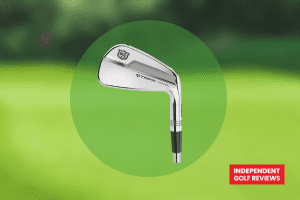
Wilson might not be the first name you think of with blade irons, but the Wilson Staff Model Blades almost immediately claimed a Major victory when Gary Woodland used the clubs to win the U.S. Open.
Wilson specifically designed the Staff Model Blade Irons for better players that demand accurate feel and feedback.
Adapting technology from their classic and iconic Wilson Dyna-Powered irons, the Staff Model Blades feature “Fluid Feel Hosel” technology (a weight-saving plug running up the hosel) that allows Wilson club makers to create a larger head and broader sole for increased playability and forgiveness on poor strikes.
Taking feedback from Wilson Staff Tour players, they added a slight amount of rounding in the sole to increase consistency of strike and improve turf interaction for a better feel through impact.
One of our favorite features in the Wilson Staff Model Blade irons has to be their addition of small diamond cutouts that frame the grooves on the club face. This design element is an homage to previous Wilson blade models and inspires confidence in the better golfer that they are fully square to the golf ball and in line with their target.
If you want a Wilson iron with slightly more forgiveness, check out IndependentGolfReview’s hands-on review of the Wilson Staff Model CB Irons.
Stock Shafts: True Temper Dynamic Gold
Pros | Cons |
|
|
7. New Level 623 MB (Futuristic Looking Blade Iron)
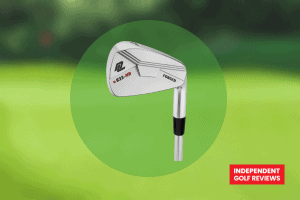
The New Level 623 MB irons are the latest advancement to the New Level iron lineup. While New Level is still an emerging and “newer” golf club manufacturer (no pun intended), they take craftsmanship and club design just as seriously as club makers that have been around for generations.
The “623” name serves as a way to pay respect to the first New Level irons played on the PGA Tour, Korn Ferry Tour, LPGA Tour, and PGA Tour of Champions.
Forged from a single piece of 1020 Carbon Steel (like most blades on our list), the 623 MB differentiates itself from competitors in the club’s appearance. The 623 MBs look drastically different from every other blade iron on our list, but that isn’t a flaw by any stretch of the imagination.
The 623 MBs have every visual aspect better players crave in a blade (limited offset, a narrow sole, thin top line) while introducing modern design elements with the sharp milling lines that mark the “muscle” part of these muscle back irons.
While the thin sole is fantastic throughout a complete set for the most elite ball strikers, the New Level 623 MBs were made to flow perfectly into the 623 CBs if you want a combo set with a little more forgiveness and playability in the longer irons.
If you’d like, check out our in-person tour of the New Level Golf HQ In Arizona. You can also see our hands-on review of the 623 M irons by clicking here.
Stock Shafts: 30 Premium Shafts Available
Pros | Cons |
|
|
8. Miura MB 101 (Beautiful Craftsmanship & Thinnest Look)
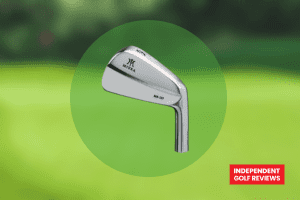
Miura is a brand that’s only well known to golf purists that cherish superior craftsmanship, materials, and the ultimate minimalist iron designs. That should take nothing away from how amazing Miura’s MB 101 blade irons perform.
The Miura MB 101’s are the smallest, thinnest, and least forgiving irons on our list. They were designed for the best elite golfers with incredible confidence in their ball striking.
At address, the Miura MB 101’s have zero offset, tiny heads, and shorter grooves that cover a smaller amount of the face. This design almost separates the “pretenders” from the true ball strikers, as shots hit on the toe will have dramatically worse results than center hits.
The angles of this club look sharp. The top line is incredibly thin, and the toe is squared, but the sole is slightly wider than expected. Miura actually incrementally increased the width of the sole in the MB 101s to add more resistance to digging through the turf.
We particularly love Miura blades because Miura has been refining their forging process in the same facility in Japan since the mid-1960s (guaranteeing the pure feel everyone wants), and the fact that Miura proudly states:
“The Miura MB-101 irons are built for the lowest handicap golfers. If you are not one (a single-digit handicap) that can consistently strike the center of the clubface, this is not the Miura iron for you.”
If you’d like to check Independent Golf Reviews hands-on tour of Miura’s US facility in Arizona, click here.
Stock Shafts: Premium options from Accra, AeroTech, KBS, Mitsubishi Chemical, Nippon, Oban, Project X, True Temper
Pros | Cons |
|
|
9. PING BluePrint (Technology Packed Blades)
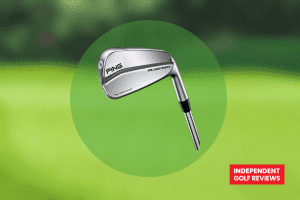
The PING BluePrint irons haven’t seen much advertising in the equipment space, but they were built well enough that Tony Finau is quoted saying, “I put them in play immediately once they arrived. There isn’t a single shot I can’t hit with them.”
PING created their BluePrint blades based on the request of several PING Tour professionals who craved a blade iron that’s sized and shaped to deliver the best workability and trajectory control.
From a visual standpoint, the BluePrint irons are clean, compact, shorter in blade length, and have minimal offset that better golfers love.
To increase the forgiveness of the BluePrint, PING added a machined Tungsten toe screw that combines with the internal heel weight to provide a precise sweet spot location. PING also narrowed the sole to create clean turf interaction for more consistent strikes from varying lies.
Lastly, PING has added a “Hydropearl Chrome 2.0” finish that helps guarantee solid contact by repelling excess moisture.
Stock Shafts: Dynamic Gold 120 (Low Trajectory, Low Spin)
Pros | Cons |
|
|
10. Cobra KING MB (Designed for Full Set or Combo Set Use)
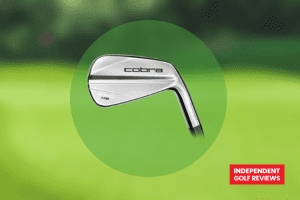
The new 2023 Cobra KING MB irons are what every golfer wants in a set of blades. They are small, compactly shaped, and aesthetically stunning.
The KING MBs saw many technological advancements in their design process. To start, the KING MBs feel more forgiving than most blade-style irons due to the CNC undercuts in the back of every club head.
This precise milling allowed Cobra club makers to reposition weight from the high center to the lower center and heel/toe areas of the club head to improve launch conditions and add forgiveness to off-center strikes.
This tiny “cavity back” is deeper in the long irons for enhanced stability through impact and higher launch conditions while being shallower in the scoring irons for greater control and shot-shaping ability.
We particularly think the Cobra KING MBs are a fantastic choice for the golfer teetering on the edge of wanting to play blades because Cobra designed the set to flow seamlessly into the new KING CBs if you wanted bladed short irons and cavity back longer irons for more forgiveness.
Stock Shafts: KBS $-Taper
Pros | Cons |
|
|
How We Test Blade Irons Before Buying:
If you think your skill level and ball striking have gotten to the point that blade irons would help your performance (likely a low or Scratch/+ handicap), it’s now time to find your set.
Getting Fit For Blades
A secret you aren’t going to hear on many golf blogs is that many blade irons feel very similar.
Since you have to be in the fairly “elite” level ball striking to play blades with consistency, you’re more testing the feeling you receive from Solid and Poor strikes, along with the tightness of your downrange dispersion (both left to right from your target line and front to back in yardage gapping.)
Blade irons are very different from cavity back irons during the fitting process because you’re looking for ample forgiveness and distance in cavity backs and distance control and shot shaping ability in blades.
The look at address behind the golf ball, the look of the clubs in your bag, and how you feel with those irons are critical.
Get fit with a professional that has ample ball data tracking equipment so you can leave the fitting confident that you have the best blade irons for your golf swing.
Frequently Asked Questions About The Best Blade Irons of 2023
Are there different names for blade-style irons?
Like everything in golf, there has to be some confusing terminology around the topic of blade irons.
“Blades” originally received their name when golfers thought the clubs looked so slim and sleek that they resembled Knife Blades.
Today, blades are categorized as “Blade Irons” or also “Muscle Back Irons” (commonly called MB’s).
Check out: “Blades vs. Cavity Back Irons.”
What handicap should you be before you play blade irons?
There are no “set rules” for exactly what handicap you should be before implementing blades into your golf bag.
Many manufacturers recommend being a low single-digit handicap or even a Scratch or “+” handicap, but that’s usually because golfers of that skill level are hitting the center of the face with a high percentage and won’t limit their potential by sacrificing forgiveness.
🏌️♂️ Subscribe to
Independent Golf Reviews 👇
Get Golf Discounts & Giveaways from the top brands and stores in golf.
Sign up below to be automatically entered in this months giveaway.
Success!⛳️
You are now an official member of IGR. Keep an eye out for the perks.
No spam, ever. 🔒
About The Author
Writers of Independent Golf Reviews
Independent Golf Reviews has tested and reviewed 1000+ golf products over the past 10 years. We use our experience and expertise to give golfers an unbiased insight on the market.
Read more…
Share
Receive the best golf discounts available exclusively for our subscribers and be auto entered into our monthly golf giveaways!
Success!⛳️
You are now an official member of IGR. Keep an eye out for the perks.
No spam, ever. 🔒


